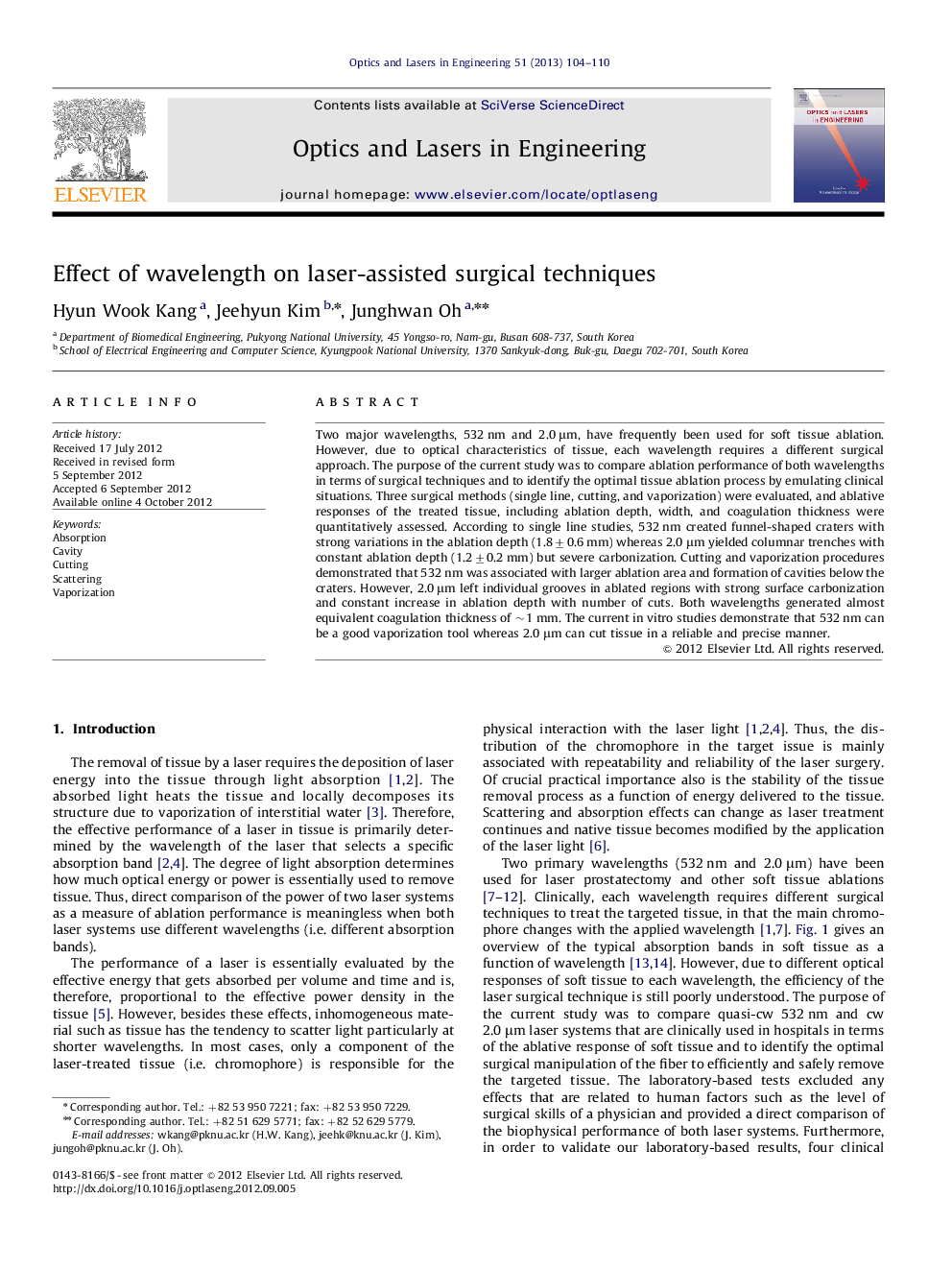| کد مقاله | کد نشریه | سال انتشار | مقاله انگلیسی | نسخه تمام متن |
|---|---|---|---|---|
| 734884 | 893546 | 2013 | 7 صفحه PDF | دانلود رایگان |

Two major wavelengths, 532 nm and 2.0 μm, have frequently been used for soft tissue ablation. However, due to optical characteristics of tissue, each wavelength requires a different surgical approach. The purpose of the current study was to compare ablation performance of both wavelengths in terms of surgical techniques and to identify the optimal tissue ablation process by emulating clinical situations. Three surgical methods (single line, cutting, and vaporization) were evaluated, and ablative responses of the treated tissue, including ablation depth, width, and coagulation thickness were quantitatively assessed. According to single line studies, 532 nm created funnel-shaped craters with strong variations in the ablation depth (1.8±0.6 mm) whereas 2.0 μm yielded columnar trenches with constant ablation depth (1.2±0.2 mm) but severe carbonization. Cutting and vaporization procedures demonstrated that 532 nm was associated with larger ablation area and formation of cavities below the craters. However, 2.0 μm left individual grooves in ablated regions with strong surface carbonization and constant increase in ablation depth with number of cuts. Both wavelengths generated almost equivalent coagulation thickness of ∼1 mm. The current in vitro studies demonstrate that 532 nm can be a good vaporization tool whereas 2.0 μm can cut tissue in a reliable and precise manner.
► This paper compared two major wavelengths for laser therapy.
► Various surgical techniques were evaluated for each wavelength.
► Clinical laser procedures confirmed the current findings of laser ablation.
Journal: Optics and Lasers in Engineering - Volume 51, Issue 2, February 2013, Pages 104–110